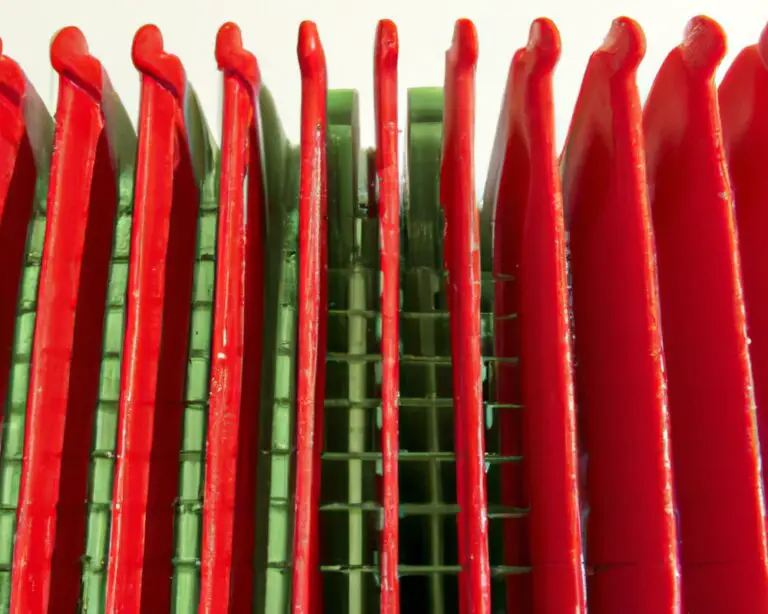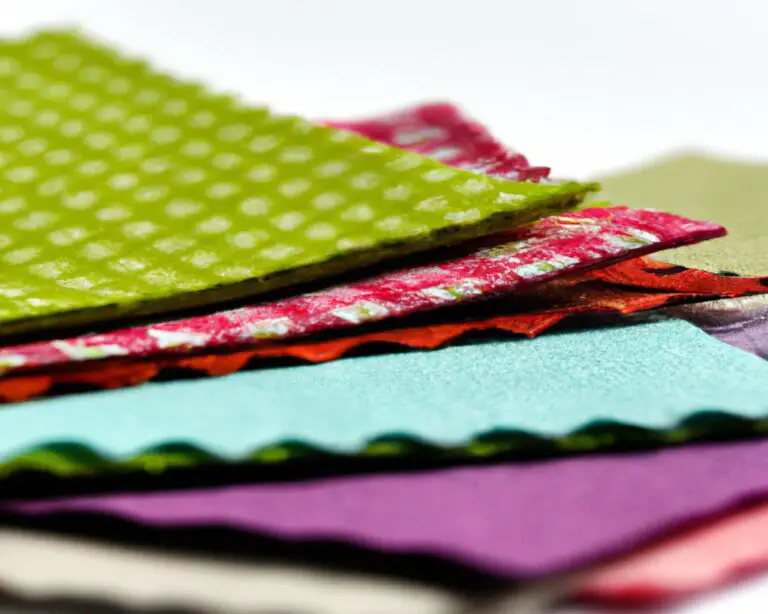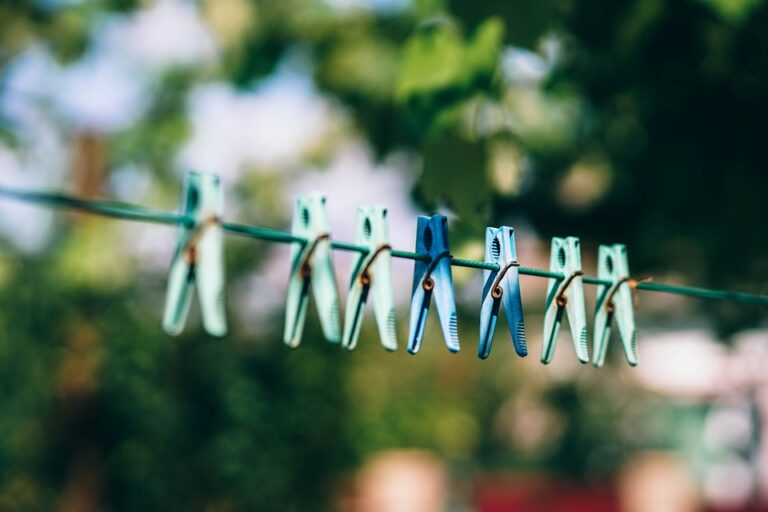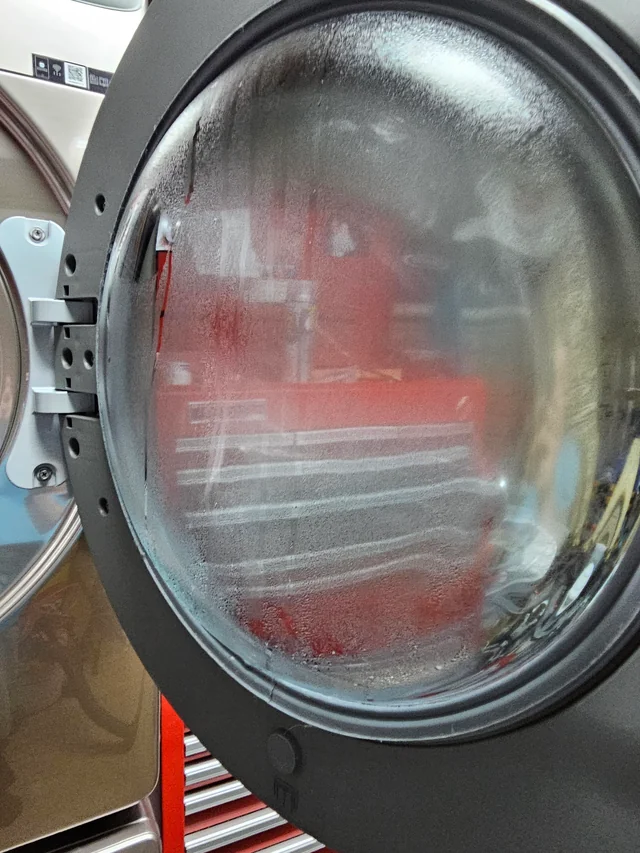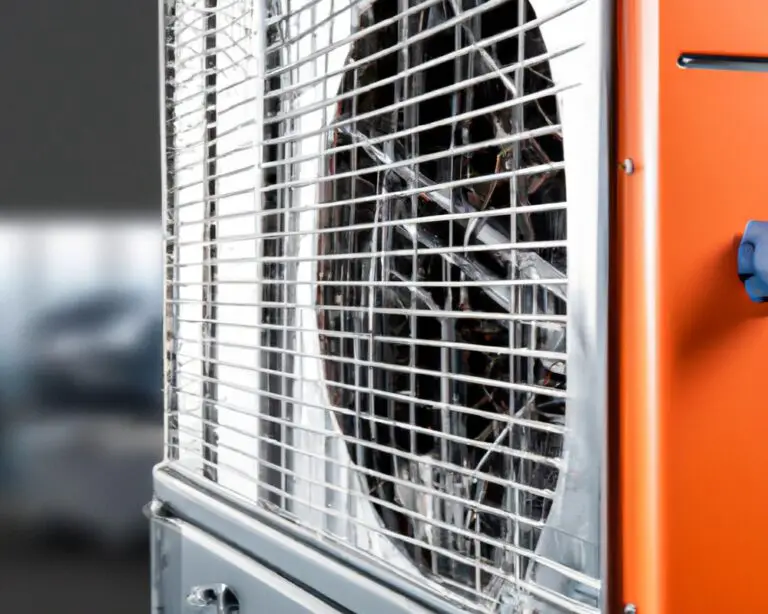Clothesline Systems: The Ultimate Space-Saving Solution
Key Takeaways:
- Clothesline systems are an eco-friendly alternative to traditional dryers.
- They provide significant energy and cost savings.
- Clothesline systems are easy to install and maintain.
- They are suitable for both small and large households.
Tired of shelling out money on energy bills just to dry your clothes?
Looking to make a positive impact on the environment while saving some bucks?
Well, look no further! Clothesline systems are here to revolutionize your laundry routine.
These simple yet effective systems not only help conserve valuable energy but also prove to be cost-effective in the long run.
With various types to choose from, including traditional, retractable, and rotary, there’s a clothesline system for every space and preference.
In this article, I’ll guide you through the benefits, types, installation process, and maintenance tips for clothesline systems.
Get ready to embrace the eco-friendly and wallet-friendly way of drying your clothes!
| System Type | Advantages | Disadvantages |
|---|---|---|
| Retractable | – Can be easily retracted when not in use – Saves space – Protects clothes from weather | – Limited drying capacity – Requires regular maintenance |
| Rotary | – Provides ample drying space – Can handle heavy loads – Easy to use | – Takes up more space than retractable systems – Not suitable for small spaces |
| Wall-Mounted | – Space-saving option – Can be installed indoors or outdoors – Durable | – Limited drying area – May require professional installation |
| Portable | – Can be easily moved – Suitable for small spaces – No installation required | – Limited drying capacity – Not as sturdy as other systems |
Benefits of Clothesline Systems
Save energy, save money, and help the environment with clothesline systems.
Energy Saving
Energy saving is one of the key benefits of clothesline systems. By using a clothesline instead of a dryer, you can significantly reduce your energy consumption.
Not only does this help lower your utility bills, but it also reduces your carbon footprint.
Clothesline systems utilize renewable energy from the sun, making them an environmentally-friendly option for drying your laundry. Plus, you’ll be able to enjoy the fresh scent of air-dried clothes!

Cost Effective
Cost Effective: One of the major benefits of using a clothesline system is its cost-effectiveness.
It’s a simple and affordable solution for drying clothes, as it eliminates the need for expensive dryers or relying on electrical power.
By harnessing the power of natural air and sunlight, you can save money on energy bills and reduce your carbon footprint.
Plus, the initial investment in a clothesline system is relatively low, and it requires minimal maintenance and repairs.
So, if you’re looking for a budget-friendly way to dry your clothes, a clothesline system is a great option.
Environmentally Friendly
Environmentally friendly.
When it comes to caring for the planet, it’s crucial to consider how our daily choices impact the environment.
Using clothesline systems is a simple yet effective way to be more environmentally friendly.
Here’s why:
- Energy Conservation: By using a clothesline, you can reduce your dependence on electric dryers, which consume a significant amount of energy. Air-drying your clothes conserves energy and reduces carbon emissions.
- Reduced Waste: Clothesline systems help extend the life of your clothes. Rather than constantly putting them through the washer and dryer, air-drying can help prevent wear and tear, reducing the need for frequent replacements.
- Sustainable Alternative: Choosing a clothesline system promotes sustainable living by minimizing our reliance on non-renewable resources like electricity and natural gas. It’s a small change that can have a big impact.
- Fresh and Natural: Air-drying your clothes gives them a fresh, crisp scent that can’t be replicated by a dryer sheet. Plus, sunlight naturally bleaches and sanitizes fabrics, providing additional benefits.
By opting for a clothesline system, you can contribute to a more sustainable and environmentally friendly lifestyle.
So why not give it a try?

Types of Clothesline Systems
There are three main types of clothesline systems: traditional, retractable, and rotary.
Traditional clotheslines, as the name suggests, are the classic option, while retractable clotheslines offer convenience and flexibility.
Rotary clotheslines are a popular choice for larger outdoor spaces.
Traditional Clotheslines
Traditional clotheslines are a simple and cost-effective way to dry your laundry.
They consist of a rope or wire stretched between two posts or trees, allowing you to hang your clothes outside to dry naturally.
Here are a few advantages of using a traditional clothesline:
- Environmentally friendly: By using a clothesline, you can reduce your carbon footprint and save on electricity bills.
- Fresh scent: Hanging clothes outside allows them to absorb the pleasant outdoor aroma, leaving them smelling fresh and clean.
- Gentle on clothes: Traditional clotheslines are gentle on fabrics, reducing wear and tear caused by heat and tumbling in a dryer.
- Versatility: You can hang various types of clothing and linens on a clothesline, including clothes, towels, bedsheets, and blankets.
- No maintenance: Traditional clotheslines don’t require any maintenance or special equipment. All you need is a sturdy rope or wire and some pegs or clips.
Remember, using a traditional clothesline may require more time and effort compared to using a dryer, but the eco-friendly benefits and natural freshness of your clothes make it worth considering.

Retractable Clotheslines
Retractable clotheslines are a convenient and space-saving option for drying your laundry. These clotheslines can be easily installed indoors or outdoors, allowing you to extend and retract the line as needed.
Here are some key features of retractable clotheslines:
- Adjustable Length: Retractable clotheslines typically have an adjustable length, allowing you to customize the drying space based on your needs. This flexibility is especially useful if you have limited space or want to dry different types of laundry simultaneously.
- Easy to Install: Installing a retractable clothesline is straightforward and can be done by following the manufacturer’s instructions. Most models come with mounting brackets or hooks that can be attached to walls, posts, or other structures.
- Durability: Retractable clotheslines are designed to withstand outdoor conditions and are made from high-quality materials such as stainless steel or nylon. This ensures longevity and prevents damage due to weather or tension.
- Versatility: These clotheslines can be used for drying clothes, towels, bedsheets, and even lightweight blankets. They are suitable for both indoor and outdoor use, making them a versatile option for any home.
- Easy to Use: With a simple pull, the line extends, allowing you to hang your laundry. Once the drying is done, retracting the line is as easy as pressing a button or simply pulling it back into the casing. This easy-to-use mechanism saves time and eliminates the hassle of manual handling.
Retractable clotheslines offer a practical solution for drying your laundry while saving space similar to clothes drying stands. Their adjustable length, durability, versatility, and ease of use make them a popular choice among homeowners.
Whether you have limited outdoor space or want a convenient indoor drying option, a retractable clothesline is worth considering.
Rotary Clotheslines
Rotary clotheslines are a popular choice for outdoor drying.
They feature a pole in the center with multiple lines radiating outwards.
Here’s why you might consider a rotary clothesline:
- Space-saving: Rotary clotheslines take advantage of vertical space, ideal for small yards or limited outdoor areas.
- Better air circulation: The rotating feature allows clothes to catch more breeze, which helps in faster drying and reducing wrinkles.
- Versatility: These clotheslines can handle large loads and accommodate different-sized items, from small garments to large sheets or blankets.
- Durability: Designed to withstand outdoor conditions, rotary clotheslines are made from sturdy materials, ensuring longevity.
- Easy to use: With a simple push or pull, you can easily open or close the rotary clothesline for hassle-free setup and efficient storage.
So, if you’re looking for a space-saving, durable, and versatile clothes drying solution, a rotary clothesline might be the perfect fit for you.
Factors to Consider when Choosing a Clothesline System
When choosing a clothesline system, factors to consider include space availability, installation and set-up, durability and material, and ease of use.
Space Availability
Space availability is a key factor when choosing a clothesline system. Consider the amount of space you have available in your yard or home before making a decision.
If you have a spacious backyard, a traditional outdoor clothesline might be suitable.
For those with limited space, retractable clotheslines or wall-mounted ones can be a great option. Additionally, if indoor space is limited, you may want to consider portable drying racks or clotheslines that can be used both indoors and outdoors.
Installation and Set-Up
Installation and set-up of a clothesline system is a fairly straightforward process. First, choose the location for your clothesline that receives ample sunlight and has enough space for your laundry needs.
Next, install the posts or mounting brackets securely into the ground or on a wall.
Make sure they are level and sturdy. Then, attach the clothesline wire or cord between the posts, ensuring sufficient tension.
Finally, test the clothesline system by hanging a load of laundry.
Adjust the tension if necessary.
Durability and Material
Durability and material are two key factors to consider when choosing a clothesline system.
You want a clothesline that can withstand the elements and regular use without breaking or deteriorating quickly.
Look for clotheslines made from sturdy materials such as stainless steel or rust-resistant aluminum.
These materials are durable and can handle the weight of wet clothes without sagging or bending.
Avoid clotheslines made from cheap plastic or flimsy metal, as they may not last long and could result in clothes falling to the ground.
Prioritizing durability and high-quality materials will ensure that your clothesline system lasts for years to come.
Ease of Use
Ease of use is a key factor to consider when choosing a clothesline system.
You want a system that is simple and straightforward to use, so you can easily hang and remove your laundry without any hassle.
Look for features like adjustable height, smooth pulley systems, and sturdy construction that make the clothesline easy to operate.
A user-friendly clothesline system will save you time and effort, making the chore of drying clothes much easier.
So, when selecting a clothesline system, prioritize ease of use for maximum convenience.
How to Install a Clothesline System
Choosing the Right Location
To find the optimal location for your clothesline system, consider the following factors. First, look for a spot that receives ample sunlight and has good air circulation to help clothes dry quickly.
Secondly, locate an area with enough space to accommodate the length of the clothesline and ensure garments won’t touch the ground.
Lastly, choose a spot that is easily accessible for convenience when hanging or removing laundry. Taking these factors into account will help you choose the right location for your clothesline system.
Installing a Traditional Clothesline
Installing a traditional clothesline is a straightforward process. Here’s a brief step-by-step guide:
- Choose the location: Find a spot in your yard that receives ample sunlight and has enough space to accommodate the clothesline.
- Gather the materials: You’ll need a sturdy clothesline post or poles, a length of weather-resistant clothesline wire, and any necessary tools, such as a shovel or post-hole digger.
- Prepare the area: Dig a hole for the clothesline post or poles, ensuring it is deep enough to provide stability. Alternatively, you can secure the poles in concrete for added support.
- Install the clothesline: Place the post or poles in the prepared holes and fill them with soil or concrete. Make sure everything is leveled and securely in place.
- Attach the clothesline wire: Run the clothesline wire between the two posts or poles, ensuring it is tightly secured at both ends. You may need to use a turnbuckle or similar tensioning device to keep the line taut.
- Test and adjust: Give the clothesline a gentle tug to ensure it can support the weight of your clothes. Make any necessary adjustments to the tension or height.
- Start using the clothesline: Hang your clothes on the line, using clothespins or clips to secure them. Enjoy the fresh air and energy savings that come with air drying your laundry!
That’s it! Installing a traditional clothesline is a simple and cost-effective way to dry your clothes outdoors. Give it a try!
Installing a Retractable Clothesline
Installing a retractable clothesline is a simple and efficient way to dry your laundry.
Here’s a step-by-step guide:
- Choose a suitable location: Look for a space in your backyard or balcony where you can easily install the clothesline. It should have enough clearance and be accessible to sunlight.
- Gather the necessary tools: You will need a drill, screws, and a screwdriver to secure the clothesline’s mounting brackets.
- Install the mounting brackets: Use the drill and screws to attach the mounting brackets to the desired location. Make sure they are securely fastened for stability.
- Extend the clothesline: Pull the clothesline out of its housing and extend it to the desired length. This will allow you to hang your laundry with ease.
- Attach the clothesline: Use the provided hooks or clips to attach the clothesline to the mounting brackets. Ensure that it is taut and properly aligned.
- Test the system: Before using the clothesline, give it a test run by hanging a few lightweight items. Check if it can support the weight without sagging or becoming unstable.
Installing a retractable clothesline can be a quick and satisfying DIY project.
Just follow these steps, and you’ll have a convenient and space-saving solution for drying your clothes.
Installing a Rotary Clothesline
Installing a rotary clothesline is a simple process that can be done in a few steps. First, choose a location in your yard with enough space and sun exposure.
Next, dig a hole for the clothesline anchor, making sure it is deep and secure.
Insert the anchor and fill the hole with cement. Once the cement has dried, attach the clothesline arms to the anchor.
Lastly, hang the clothesline wires and ensure they are tightly secured.
And there you have it, your rotary clothesline is ready to use!
Tips for Proper Clothesline Usage
Proper clothesline usage can be enhanced with these simple tips.
Sorting and Preparing Clothes
Sorting and preparing clothes is an important task to ensure efficient use of your clothesline system. Start by separating clothes based on color and fabric type.
This helps prevent color bleeding and damage to delicate items.
Next, check the care labels on each garment and remove any items that require special attention. Give clothes a quick shake to remove any wrinkles, and fasten buttons or zippers to prevent snagging.
Lastly, consider air-drying items that are prone to shrinking or fading.
Maximizing Drying Efficiency
To maximize drying efficiency, consider these tips:
- Group similar fabrics together for faster drying times.
- Shake out garments before hanging to prevent wrinkles and help air circulate.
- Hang clothes with enough space between them to allow for proper airflow.
- If possible, position your clothesline in a sunny and breezy area.
- Time your laundry loads to take advantage of the best drying conditions.
- Consider using clothespins or hangers to prevent clothes from bunching up.
- Remove clothes as soon as they are dry to minimize wrinkling.
- Regularly clean your clothesline to prevent dirt and debris from affecting drying efficiency.
Remember, these simple steps can make a big difference in getting your laundry dry more efficiently.
Preventing Clothes from Stretching or Sagging
Preventing clothes from stretching or sagging is important to maintain their shape and fit.
Here are some tips to help you keep your clothes looking their best:
- Wash with care: Use a gentle cycle and cold water when washing your clothes. This can help prevent excessive stretching and shrinking.
- Avoid over-drying: Over-drying can cause clothes to lose their elasticity and become stretched out. Remove them from the dryer while they are still slightly damp.
- Use proper hangers: Invest in good quality hangers that provide proper support for your clothes. Avoid wire hangers as they can stretch and deform the fabric.
- Fold knits and delicate fabrics: Rather than hanging knits and delicate fabrics, fold them to prevent them from stretching. This is especially important for items like sweaters and lingerie.
- Rotate your wardrobe: Give your clothes a break between wears. By rotating your wardrobe, you allow the fibers to relax and regain their shape.
Maintenance and Care of Clothesline Systems
To keep your clothesline system in good condition, regular cleaning and maintenance are important.
You should also know how to make repairs and replace parts when necessary.
Cleaning and Maintenance
Cleaning and maintaining your clothesline system is essential to ensure its longevity and optimal performance.
Here are some tips to help you keep your clothesline in great shape:
- Regular cleaning: Clean the clothesline regularly to remove dirt, dust, and debris. Wipe it down with a damp cloth or use a mild soapy solution if needed.
- Check rope or line: Inspect the ropes or lines of your clothesline system for any signs of wear or damage. Replace them if necessary to prevent accidents or clothes from falling.
- Lubricate pulleys and mechanisms: Lubricate the pulleys and mechanisms of your retractable or rotary clothesline with a silicone-based lubricant. This will keep them running smoothly and prevent rusting.
- Secure ground fittings: If your clothesline is mounted to the ground, check the fittings and make sure they are secure. Tighten any loose screws or bolts to maintain stability.
- Store in bad weather: During harsh weather conditions, such as storms or heavy snowfall, it’s best to retract or take down your clothesline temporarily. This will protect it from potential damage.
- Remove stains: If you notice any stains on your clothesline, gently scrub them with a soft brush and a mild detergent. Rinse thoroughly and allow it to dry completely before using it again.
Repairing and Replacing Parts
Repairing and replacing parts of your clothesline systems is an essential task to ensure their longevity and functionality.
Some common parts that may require repair or replacement include the cords, pulleys, and clips.
To repair the cords, simply tie any frayed ends or replace them altogether.
For pulleys, make sure they are properly secured and lubricate them if needed.
Clips can be easily replaced if they become damaged or break.
Regularly inspecting and addressing any issues with these parts will help your clothesline system function effectively.
FAQs about Clothesline Systems
Are clothesline systems suitable for all climates?
Clothesline systems are generally suitable for all climates, as long as they are made with durable materials that can withstand different weather conditions.
However, it’s important to consider a few factors.
Firstly, the type of clothesline system you choose should be able to resist rust and corrosion, especially in humid or coastal areas.
Secondly, if you live in an area with extreme temperatures, such as very hot or cold climates, it’s advisable to opt for a clothesline system that is resistant to fading, cracking, or warping due to sun exposure or freezing temperatures.
Thirdly, it’s crucial to ensure that your clothesline system is installed properly to prevent damage caused by strong winds or heavy snow loads.
By considering these factors, you can enjoy the benefits of a clothesline system regardless of your climate.
Can clotheslines damage clothes?
Can clotheslines damage clothes?
Yes, they can.
Clotheslines, particularly traditional ones made of rope or wire, can cause damage to delicate fabrics like silk or lace.
The rubbing or pulling against the line can lead to stretching, fraying, or even tears.
Additionally, clothes left on the line for extended periods can be exposed to sunlight, which may cause fading or discoloration.
To avoid this, consider using clothesline alternatives or hang delicate items indoors.
How much weight can clotheslines hold?
Clothesline systems can generally hold a significant amount of weight, depending on their design and materials.
Some clotheslines have a maximum weight capacity of around 50 pounds, while others can support up to 200 pounds or more.
It’s important to check the specifications provided by the manufacturer to ensure you don’t overload the clothesline.
Considering the weight of wet clothing, it’s advisable to distribute the load evenly and avoid hanging heavy items like blankets or rugs that may exceed the weight limit.
Always follow the guidelines provided to maximize the lifespan and functionality of your clothesline.
Can clotheslines be used indoors?
Can clotheslines be used indoors?
Yes, clotheslines can be used indoors.
It’s a convenient option for drying clothes in limited space or during bad weather.
There are different types of indoor clotheslines available, such as retractable, wall-mounted, or freestanding options.
Ensure proper installation, pick a suitable location, and consider the weight and size of the items you’ll be drying.
Using clothespins or hangers can help maximize drying space.
Indoor clotheslines are a practical alternative to using a dryer and can help save energy.
What are the alternatives to clothesline systems?
When it comes to alternative options for clothesline systems, there are a few options to consider. One option is using a drying rack.
These can be collapsible and easily stored when not in use.
Another option is using a clothes drying rack that can be mounted on a wall or door. These racks provide a convenient and space-saving solution for drying clothes indoors.
Lastly, you could also opt for a portable clothes dryer that uses warm air to quickly dry your clothes.
These are great for small spaces or when the weather doesn’t allow for outdoor drying.
Final Verdict
Clothesline systems offer numerous benefits, making them a practical and eco-friendly choice for drying clothes.
They help save energy, reduce costs, and minimize environmental impact.
When choosing a clothesline system, considerations should be given to space availability, installation, durability, and ease of use.
Proper installation and usage techniques can maximize drying efficiency and prevent clothes from stretching or sagging.
Regular maintenance and care are necessary to keep the clothesline system in good condition.
Overall, clothesline systems are a reliable and sustainable alternative to dryers, providing a greener way to dry clothes and save money in the long run.

